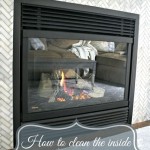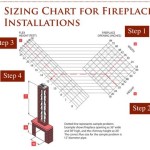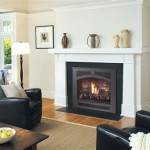Pleasant Hearth Fireplace Door Installation: A Comprehensive Guide
A Pleasant Hearth fireplace door not only enhances the aesthetic appeal of a fireplace but also contributes to improved safety and energy efficiency. Installing a fireplace door, while seemingly straightforward, requires careful attention to detail to ensure a proper fit and secure installation. This article provides a comprehensive guide to installing a Pleasant Hearth fireplace door, covering essential preparation steps, installation procedures, and troubleshooting common issues.
Before embarking on the installation, it is crucial to understand the benefits a fireplace door offers. These include reducing drafts when the fireplace is not in use, preventing sparks and embers from escaping the firebox, and controlling airflow to optimize combustion efficiency. Furthermore, a well-chosen fireplace door can dramatically improve the visual appearance of the fireplace, making it a focal point in the room.
Key Point 1: Preparing for Installation
Proper preparation is paramount to a successful Pleasant Hearth fireplace door installation. This stage involves verifying the fireplace's dimensions, gathering necessary tools and materials, and ensuring the safety of the work environment. Rushing through this phase can lead to inaccuracies and potential complications during the actual installation process.
The first step is to meticulously measure the fireplace opening. Precision is key here. Measure the height and width of the firebox opening at the front. It's advisable to take multiple measurements at different points to account for any irregularities or inconsistencies in the brickwork. Record the smallest height and width measurements, as these will be the limiting dimensions for the fireplace door. Refer to the Pleasant Hearth fireplace door model's specifications to ensure compatibility with the measured dimensions. Selecting a door that is too large or too small will result in an improper and potentially unsafe installation.
Next, carefully unpack the Pleasant Hearth fireplace door and inspect all components for any damage that may have occurred during shipping. Check the door frame, glass panels, handles, and any included hardware. Report any damaged or missing parts to the retailer or manufacturer immediately. It is far easier to obtain replacement parts before beginning the installation than to discover a missing screw halfway through the process.
Gather the necessary tools and materials. Common tools required include a drill with various drill bits (including masonry bits), a screwdriver (both Phillips head and flathead), a level, a measuring tape, safety glasses, work gloves, a hammer, and a pencil or marker. Depending on the fireplace construction and the installation method (overlap or inside fit), additional materials may be needed, such as shims, masonry screws, or adhesive. Having all tools and materials readily available will streamline the installation process and minimize interruptions.
Finally, prepare the work area. Protect the surrounding floor with drop cloths or plastic sheeting to prevent damage from dust, debris, or accidental spills. Ensure adequate lighting to clearly see the work area. If the fireplace has been recently used, allow it to cool completely before beginning the installation. Clear any obstructions from the fireplace opening and ensure that the area is well-ventilated. Safety should always be a priority; wear safety glasses and work gloves throughout the installation process.
Key Point 2: Installing the Fireplace Door
With the preparation phase complete, the actual installation of the Pleasant Hearth fireplace door can begin. The specific installation steps may vary slightly depending on the fireplace door model and the type of fireplace construction, but the general principles remain the same. This section outlines the typical steps involved in installing a fireplace door using both overlap and inside fit methods.
Begin by positioning the fireplace door frame within the fireplace opening. For an overlap fit, the door frame will sit against the face of the fireplace. For an inside fit, the door frame will be recessed within the firebox opening. Ensure the frame is centered and level. Use shims, if necessary, to achieve a perfectly level and plumb installation. An unlevel frame can cause the doors to bind or swing improperly.
Once the frame is properly positioned, secure it to the fireplace. For brick or masonry fireplaces, pre-drill pilot holes through the frame and into the brick using a masonry drill bit. The number and placement of the pilot holes will depend on the fireplace door model. Insert masonry screws through the frame and into the pilot holes, tightening them until the frame is securely attached to the fireplace. Avoid overtightening the screws, as this can damage the frame or crack the brick.
For metal fireplaces or those with a pre-existing metal insert, self-tapping screws may be used to attach the frame. In some cases, adhesive may be necessary in conjunction with screws to provide additional support, especially if the fireplace surface is uneven or damaged. Always follow the manufacturer's instructions regarding the type of adhesive to use and the recommended application method.
After the frame is securely installed, attach the door panels to the frame. Most Pleasant Hearth fireplace doors use hinges to attach the doors to the frame. Carefully align the hinges and insert the hinge pins. Ensure that the doors swing freely and close properly. Adjust the hinges, if necessary, to achieve smooth and even door movement. Check for any gaps between the doors and the frame. If gaps are present, adjust the hinges or use weather stripping to create a tighter seal.
Finally, install any remaining hardware, such as handles, latches, or decorative trim. Follow the manufacturer's instructions for installing these components. Test the functionality of the handles and latches to ensure that they operate smoothly and securely. Inspect the entire installation for any loose screws, gaps, or other potential issues. Make any necessary adjustments to ensure a safe and aesthetically pleasing installation.
Key Point 3: Troubleshooting Common Installation Issues
Even with careful preparation and execution, some common issues may arise during the installation of a Pleasant Hearth fireplace door. This section addresses some of the most frequent problems encountered and provides practical solutions to resolve them.
One common issue is a frame that does not fit properly within the fireplace opening. If the frame is too large, it may be necessary to carefully trim the brickwork around the opening using a chisel or grinder. However, this should only be done as a last resort, as it can be time-consuming and potentially damage the fireplace. If the frame is too small, gaps will be present between the frame and the fireplace. These gaps can be filled with shims or masonry sealant to create a tighter seal. Ensure that the sealant is heat-resistant and compatible with the fireplace materials.
Another common issue is doors that do not swing properly or bind against the frame. This can be caused by misaligned hinges, an unlevel frame, or a warped door. Try adjusting the hinges to correct the alignment. If the frame is unlevel, use shims to level it. If the door is warped, it may be necessary to contact the manufacturer for a replacement. Applying a lubricant, such as graphite, to the hinges can also help to improve door movement.
Screws that strip or break during installation can also be a problem. This is often caused by overtightening the screws or using the wrong type of screw. Use screws that are specifically designed for masonry or metal applications. Avoid overtightening the screws, and pre-drill pilot holes to prevent stripping. If a screw breaks, carefully remove the broken portion using pliers or a screw extractor. Replace the broken screw with a new one of the same size and type.
Finally, issues can arise with the overall stability of the installed door. If the door frame feels loose or unstable, it may be necessary to add additional screws or adhesive to secure it to the fireplace. Ensure that the screws are properly anchored in the brickwork or metal framing. If using adhesive, allow it to cure completely before using the fireplace. Regularly inspect the door for any signs of loosening or damage, and make any necessary repairs promptly.
By following these guidelines and taking the time to carefully prepare and execute the installation, a Pleasant Hearth fireplace door can be installed safely and effectively, enhancing both the appearance and functionality of the fireplace. Careful attention to detail and adherence to the manufacturer's instructions are crucial for a successful installation.

Pleasant Hearth Fireplace Doors Installation

Diy Fireplace Door Installation Pleasant Hearth

How To Install Fireplace Doors Pleasant Hearth

Pleasant Hearth Fenwick Fireplace Door Doors

Pleasant Hearth Alpine Fireplace Glass Door Doors

Pleasant Hearth Clairmont Medium Glass Fireplace Doors Cm 3011 The Home Depot

Pleasant Hearth Alsip Fireplace Glass Door Doors

Pleasant Hearth Fillmore Small 29 5 By 37 In Opening Glass Fireplace Factorypure

Pleasant Hearth Ascot Glass Firescreen Black

Pleasant Hearth Alpine Medium Skyline Nickel Glass Fireplace Doors An 1011sn The Home Depot
Related Posts








